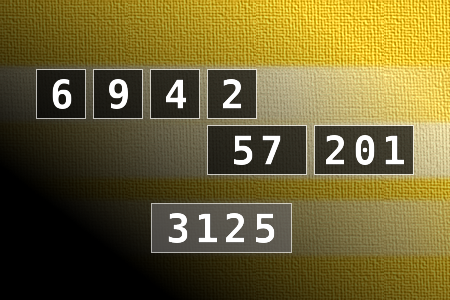Calculate the number 3125
NUMBERMANIA: Calculate the number 3125 using numbers [6, 9, 4, 2, 57, 201] and basic arithmetic operations (+, -, *, /). Each of the numbers can be used only once.Correct answers: 20
The first user who solved this task is Thinh Ddh.
#brainteasers #math #numbermania

A student would do anything
A student comes to a young professor's office hours. She glances down the hall, closes his door, and kneels pleadingly.
"I would do anything to pass this exam," she says.
She leans closer to him,
flips back her hair,
and gazes meaningfully into his eyes.
"I mean,"
she whispers,
"I would do anything..."
He returns her gaze,
"Anything?"
"Anything."
His voice softens,
"Anything?"
"Anything,"
she repeats again.
His voice turns to a whisper.
"Would you
... study?"
"I would do anything to pass this exam," she says.
She leans closer to him,
flips back her hair,
and gazes meaningfully into his eyes.
"I mean,"
she whispers,
"I would do anything..."
He returns her gaze,
"Anything?"
"Anything."
His voice softens,
"Anything?"
"Anything,"
she repeats again.
His voice turns to a whisper.
"Would you
... study?"

